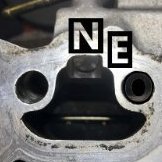No start fresh build R33 GTST RB20DE Neo+T AEM Series 2 ECU 30-6620
Announcements
-
Similar Content
-
Latest Posts
-
By soviet_merlin · Posted
Oh wow, it's easy to forget how cheap these can be. Probably the cheapest way to travel. Though people in cars here tend to be morons and I would not feel very safe. Were scooters ever big in Australia? It used to be the thing growing up in Europe ~20 years ago. 50/70/125ccm Peugeot or Yamaha and some others. Utterly obnoxious Polini race exhausts. Kick stands that slant as much as possible. So loud. So much noise for really not moving very fast at all. But it felt cool at the time. Not sure where I'm going with this, but there is an aftermarket for mopeds! Though I'd have pictured you more for a Goldwing kind of guy after growing out of the Harley. -
As the MX5 isn't apparently "manly" enough, and I need something for runs to the local shops, and also take to my part time job at the salon, basically I can keep the MX5 away from car parks and stuff......like "flying lockers", I was wondering what I could buy to fix this issue LOL, I pick up a new Yamaha 125 Delight this arvo from Trooper Lu, basically a R1 that you can fit a slab of beer on between your feet, also, it was $29400 cheaper than a R1, so actually it's 2 x better than a R1
-
Nah. H2S. H2S is "rotten egg gas", which is what is associated with no cat. SO2 is equally nasty, and if you've ever smelt it you'll know all about it. More of a choking, acid in the back of the throat sort of thing. But you can only smell it in a narrow range up to about 1ppm. Above that, it irritates your mucous membranes, but you don't smell it.
-
Kicked the 34 in the guts, she won’t be seeing the road till I get the 31 mobile again. wont be long and she’s a bit of a garage princess anyway haha
-







Recommended Posts
Create an account or sign in to comment
You need to be a member in order to leave a comment
Create an account
Sign up for a new account in our community. It's easy!
Register a new accountSign in
Already have an account? Sign in here.
Sign In Now